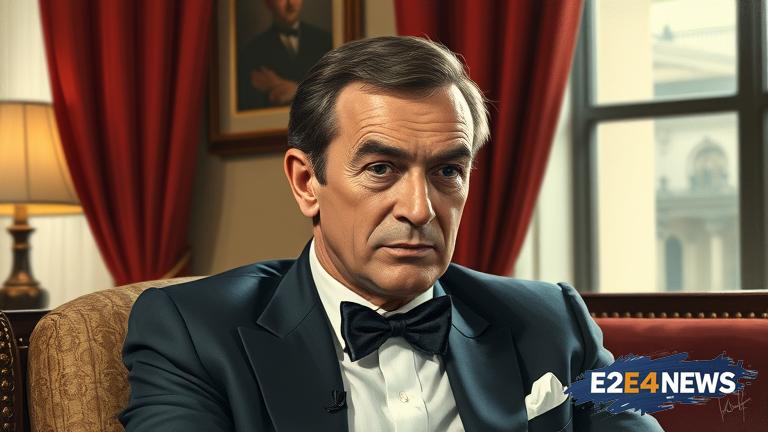The British Film Institute has unveiled a treasure trove of cue cards belonging to the renowned journalist and broadcaster, Alan Whicker. These cue cards offer a unique glimpse into Whicker’s interviewing style and technique, particularly in his iconic conversation with Sean Connery, the original James Bond. The interview, which took place in 1967, was conducted on the set of the fifth James Bond film, You Only Live Twice. Whicker’s cue cards reveal the meticulous preparation and research that went into crafting his questions, showcasing his exceptional journalistic skills. The cards also demonstrate Whicker’s ability to think on his feet, as he navigated the complexities of interviewing a charismatic and seasoned actor like Connery. The conversation between Whicker and Connery is a masterclass in interviewing, with the two engaging in a witty and insightful discussion about the James Bond franchise. Connery, who was 37 at the time, shared his thoughts on playing the iconic spy, as well as his experiences working with the film’s director, Lewis Gilbert. Whicker’s cue cards also highlight the significance of the James Bond franchise in the 1960s, with the films becoming a cultural phenomenon and a symbol of British sophistication and style. The interview is a fascinating time capsule, capturing the essence of the era and the people who defined it. You Only Live Twice, which was released in 1967, was a critical and commercial success, grossing over $111 million at the box office. The film’s success can be attributed to the chemistry between Connery and his co-star, Akiko Wakabayashi, as well as the innovative special effects and stunning locations. Whicker’s cue cards provide a behind-the-scenes look at the making of the film, with Connery sharing anecdotes about the challenges of filming in Japan and the complexities of playing a character like James Bond. The interview is also notable for its discussion of the cultural and social context of the time, with Whicker and Connery touching on topics such as the Cold War and the rise of feminism. The cue cards are a testament to Whicker’s dedication to his craft, as well as his ability to connect with his subjects and elicit insightful responses. The British Film Institute’s decision to showcase Whicker’s cue cards is a significant one, as it highlights the importance of preserving our cultural heritage and celebrating the contributions of pioneering journalists like Whicker. The exhibit is a must-visit for fans of James Bond, as well as anyone interested in the history of journalism and the art of interviewing. In conclusion, Alan Whicker’s cue cards offer a unique glimpse into the world of journalism and the making of a cultural phenomenon like James Bond. The interview with Sean Connery is a fascinating time capsule, capturing the essence of the 1960s and the people who defined it. As we continue to navigate the complexities of the modern world, Whicker’s cue cards serve as a reminder of the power of journalism and the importance of preserving our cultural heritage.
